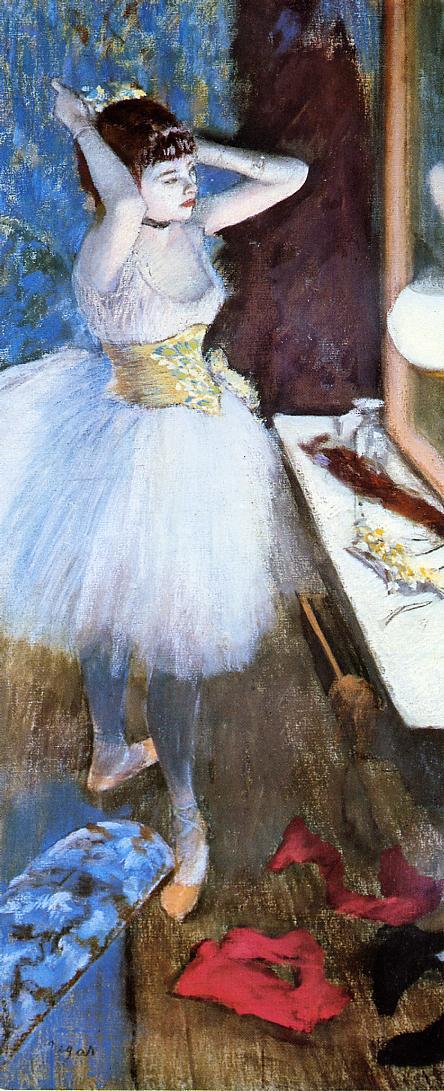Degas, Renoir, and Poetic Pastels at the Cincinnati Art Museum, October 26, 2013—January 19, 2014, gave viewers the opportunity to contemplate a special conversation with

Renoir’s thoughtful and glamorous portrait of “Jeanne Samary”
and to admire the petals on one of the flowers in

Odilon Redon’s simple and joyful “Blue Vase with Flowers”.
The selection of works from the Cincinnati Art Museum’s permanent collection highlighted the achievements of the French artists who worked with pastels in the second half of the nineteenth century.
Rarely on display because of their sensitivity to light, works in the exhibition include five masterpieces by Edgar Degas featuring his preferred subject of the ballet dance. Also on display was

Rosa Bonheur’s Sheepfold by Moonlight in the Pyrenees,
measuring four-and-a-half by six feet.
The exhibition placed the works by these renowned artists in their historical context while also addressing issues of conservation and materials.

Alfred Sisley, "Approach to the Railway Station," 1888, pastel, 15 1/8 x 18 1/8 in. Cincinnati Art Museum
In the first exhibition of what we now know as the Impressionists, in 1874, one critic praised the pastels and said they were “full of light and vigor” and “delicious.” Pastel, derived from the Latin word pasta, or “paste,” has been a preferred medium for artists since the fifteenth century. It is a chalky colored powder, modeled into a stick by combining pigment (such as an aquamarine), filler (often white chalk), and a binder such as gum tragacanth (a weak adhesive that holds the materials together). Artists such as Degas, Renoir and their contemporaries, were able to use pastel faster without the fuss of wet paint that might take up to a year to dry. These works, with their saturated hues and dense layers of velvety pigment, are some of the greatest achievements produced in newly industrialized and artistically fertile nineteenth-century France.
From a review of the show:
Both Renoir and Sisley have admirable works on display, but serious artists such as Redon, Cassatt, and Millet are under served by less than quality examples of their work, while pastel paintings such as Sheepfold By Moonlight in the Pyrenees by Rosa Bonheur (above) are long on public-friendly content but lacking in artistic merit.
The real treasures in the show come from the hand of Degas. Here we see five fine works, all depicting the ballet. These pieces appear both ancient and startlingly modern: ancient because although the Ballet is the “subject”, the works really point at more universal concerns of physicality, gesture and the unspoken realm of body language. Like other great draftsmen such as the cave painters of Chauvet, Michelangelo, Ingres, or Kitaj more recently, Degas is able to conjure a physical and emotional response to his works. The movement of the bodies, diversity of touch, and brilliance of pictorial invention activate and provoke us as viewers. Degas used pastel in a free way, constantly changing his approach to suit the needs of a particular work. In the masterpiece
Dancer In Her Dressing Room,
Degas has mixed the pastel with paint to rich effect. The pastel blooms caresses and skitters across the image in a way that mimics the diversity and unpredictable nature of the real world.
My favorite work in the show is the gripping late work
Three Dancers In Yellow Skirts from 1900.
The powerful contrasting poses of the dancers pull and wrench across the picture plane. The monumentality of Degas’ suggestion here, whether a result of failing eyesight or the urgency of old age, renders the figures as solid and solemn as Egyptian statues, yet the work is gutsy and risky. As death approached, Degas pulled no punches.

